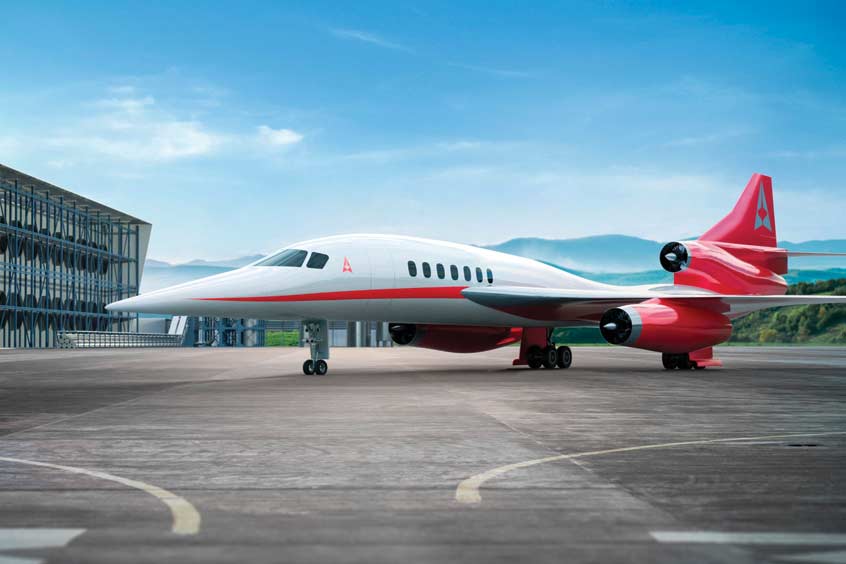Why visit ACE ’25?

Supersonic aircraft company Aerion, and Carbon Engineering Ltd. (CE), are now working together to develop solutions for carbon neutral supersonic air travel. The companies have signed a memorandum of understanding to explore ways in which CE's synthetic fuel, made from carbon dioxide captured from the atmosphere, water and clean electricity, will power Aerion's AS2 supersonic business jet.
By partnering, the two technology innovators believe they can take a significant step forward in achieving their common goal of building the clean energy transportation networks of the future, while helping to address the climate and energy challenge.
“We take environmental stewardship very seriously, and we believe that speed and being kind to our planet do not need to be mutually exclusive,” says Tom Vice, Aerion's chairman, president and CEO. “As we build the next generation of high-speed transportation networks, we recognise the need to create a broad ecosystem of innovative partnerships to achieve our vision of carbon neutral point to point global travel. We seek partners and technology visionaries who share our vision to passionately pursue addressing climate change. Carbon Engineering is leading the industry in clean energy production, and we are proud to partner with it.”
Through this agreement, Aerion and CE will jointly assess requirements to power Aerion's AS2 supersonic business jet engine, the first non-afterburning engine built to fly at supersonic speeds across land with no boom reaching the ground, entirely on CE's synthetic fuel. The companies will also explore a potential collaborative project to build an Air to Fuel plant to produce synthetic fuel specifically for the AS2 programme.
“The fundamental value of fuels made from atmospheric CO2 is that they create a circular system of emissions,” states Steve Oldham, CE's CEO. “Our DAC technology captures yesterday's emitted CO2 and converts it into fuel. When used in any vehicle, the carbon is returned to the atmosphere as CO2, however, the process then captures it again to make more fuel. So, we continually re-use existing CO2, and little or no new carbon emissions are created. This provides a way to decarbonise sectors of transportation that are difficult to electrify and that require the high energy density of liquid fuels, such as aviation or shipping. We're excited to pair our Air to Fuel solution with Aerion's visionary AS2 aircraft, and to open a pathway to delivering the world's first sustainable supersonic flight.”
As part of Aerion's commitment to carbon neutral operations from flight one, the companies will also investigate opportunities for CE to permanently remove CO2 from the atmosphere on behalf of Aerion and its customers. CE's direct air capture technology, when combined with permanent geological storage of CO2, can deliver large-scale quantities of permanent and measurable carbon dioxide removal, which can be used to counteract sources of emissions that are either too difficult or costly to eliminate.